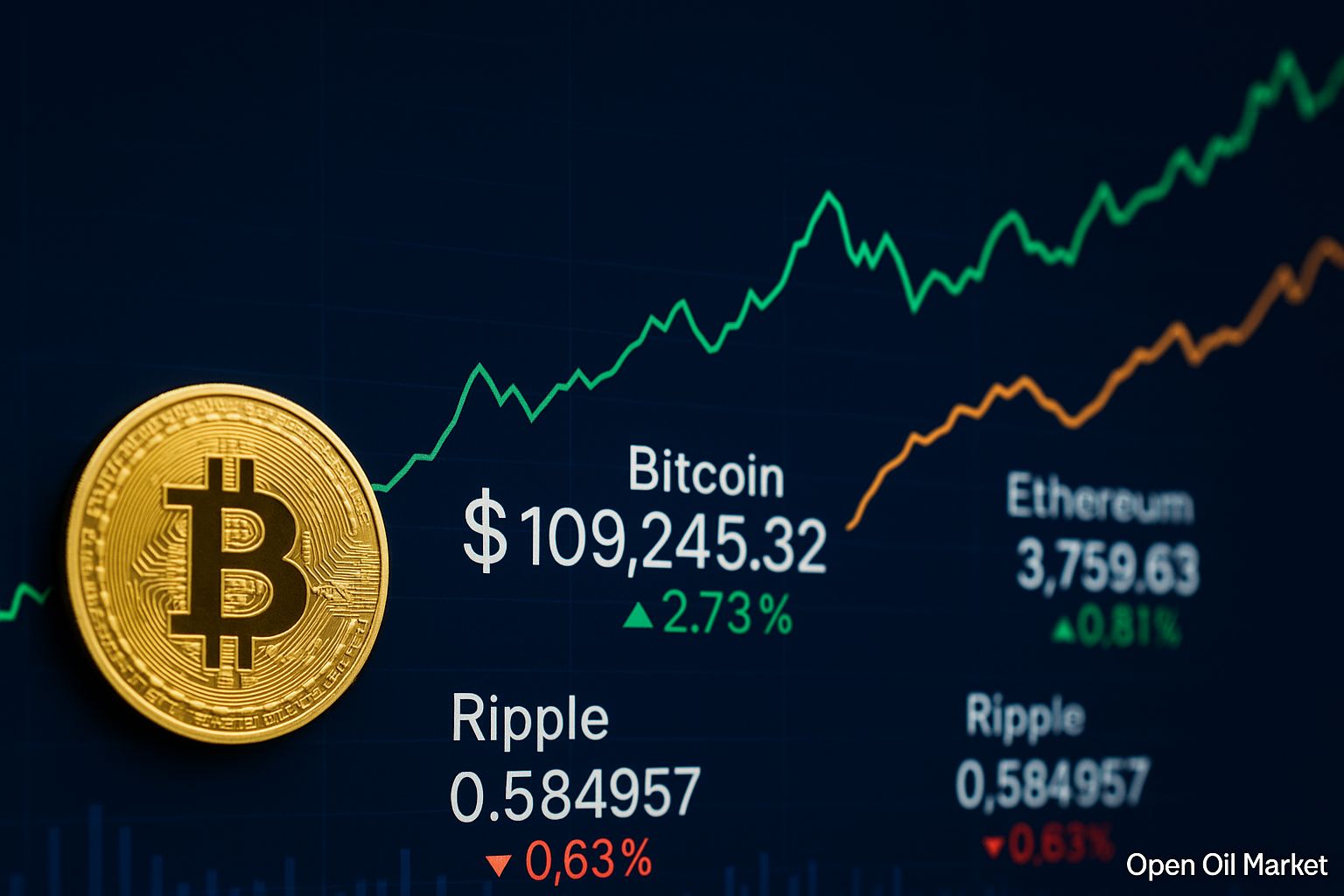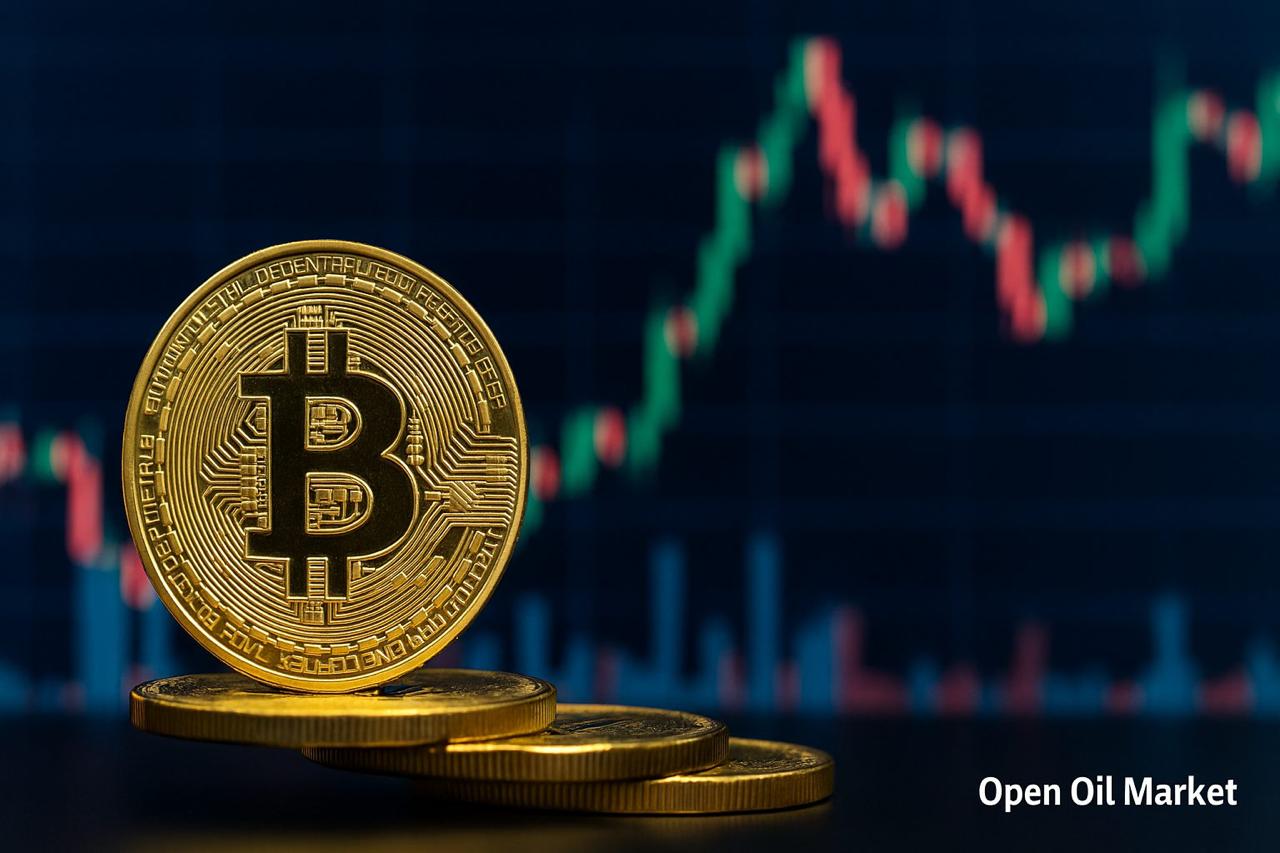
Current Cryptocurrency News for Sunday, November 2, 2025: Bitcoin Stabilizes Around $110,000, Ethereum Holds Its Ground, and Institutional Investors Show Increasing Interest in Altcoin ETFs. Overview of the Top-10 Cryptocurrencies in the World.
In recent days of October, the cryptocurrency markets are in a consolidation phase following a tumultuous rise. The total market capitalization of digital assets is approaching $3.7 trillion, with the leading coin Bitcoin stabilizing around the $110,000 mark after reaching a historic high above $126,000. Analysts note persistent volatility, estimating that in early November, the BTC price will fluctuate between $108,000 and $120,000 with short-term corrections within this range.
Key factors influencing market dynamics include:
- Monetary Policy: The U.S. Federal Reserve cut the base rate to 3.75-4% at the end of October, but Jerome Powell emphasized caution moving forward;
- Global Events: The first U.S.-China meeting concluded without a joint statement, Japan launched the yen-pegged stablecoin JPYC, while China tightens restrictions on cryptocurrencies;
- New Financial Products: The U.S. has seen the introduction of the first spot ETFs for Solana, Litecoin, and Hedera, with an XRP ETF listing expected by mid-November;
- Trading Activity: Some large investors are taking profits (reducing wallet balances with tens of thousands of BTC), which puts pressure on the price, while others view the correction as an opportunity for accumulation.
Bitcoin: Current Dynamics and Predictions
Bitcoin remains the primary driving force in the crypto market. Following the historic rally at the beginning of October, its price has corrected and is consolidating around $110,000 by the end of the month. Many analysts anticipate a phase of "direction selection": to resume an upward trend, BTC must break above the $112,000 level, which could lead to new highs. Conversely, if support around $108,000-$110,000 is lost, a retreat to the $100,000-$105,000 range is possible. Historically, November is considered favorable for Bitcoin, with median returns in this month exceeding 10% over the last cycles.
According to some experts, the base scenario for November suggests movement within the $100,000 to $109,000 range, with the lower boundary remaining a crucial support area. Meanwhile, medium-term forecasts for Bitcoin maintain a bullish inclination: the median consensus forecast for the end of the year is approaching $150,000, although the upward trend is gradually losing momentum.
Monetary Policy and the Financial Market
Central bank policy and the state of traditional finance have a significant impact on the crypto market. At the end of October, the U.S. Federal Reserve reduced the key rate to 3.75-4.0%, but Jerome Powell flagged uncertainty about future steps. These statements, against the backdrop of a budgetary crisis in the U.S., have heightened investor caution. Following this, Bitcoin saw an approximately 2% decline, while outflows from spot Bitcoin ETFs reached hundreds of millions of dollars over the week.
Additionally, negative signals from traditional markets weigh on the crypto market: corrections in stock prices and rising yields on government bonds diminish risk appetite. Investors are closely monitoring inflation data and regulators' remarks, assessing their impact on the availability of the dollar and other major currencies.
Global Events and Regulation
Geopolitical and regulatory news exert mixed influences on cryptocurrencies. Recent U.S.-China negotiations concluded without a joint communique, sending a negative signal to the markets. The People's Bank of China again labeled stablecoins as "a systemic threat" and continued tightening control over the crypto business. Conversely, on October 27, Japan launched its first official yen-pegged stablecoin, JPYC. European regulators also prepare to enhance oversight: ESMA is developing a plan to centralize control over cryptocurrency exchanges throughout the EU, moving away from fragmented licensing.
Main Altcoins and Technological Updates
Ethereum retains its status as the second-largest cryptocurrency (with a price around $3,800–$4,000) and continues to serve as a platform for DeFi and NFT applications. The upcoming December fork, Fusaka, is expected to reduce fees and enhance network security. After a significant summer surge, ETH has corrected: investors are locking in profits, and inflows into Ethereum ETFs have decreased. Nevertheless, the network's fundamental metrics remain strong, with long-term forecasts for Ethereum consistently holding around $5,500–$6,000 by year-end.
Other projects are exhibiting mixed dynamics. The recently launched spot ETFs for SOL, LTC, and HBAR attracted initial major inflows, but the prices of these tokens immediately fell by 3-6% post-launch. Privacy coins like Zcash and Monero have seen sharp price increases in recent weeks—investors are returning to anonymous solutions amid heightened transaction control. Stablecoins continue to be a market driver, with USDT and USDC maintaining liquidity, and new banking stablecoin initiatives expanding opportunities for accumulation in digital currencies.
Institutional Flows and ETF Products
- In October, cumulative inflows into Bitcoin ETFs reached several billion dollars, though the largest funds experienced slight net outflows;
- New spot ETFs for SOL, LTC, and HBAR, launched on October 28, attracted around $65 million: $56 million went to Solana, $8 million to Hedera, and $1 million to Litecoin. However, immediately after launch, their asset prices fell by 3-6%;
- A spot ETF for XRP is expected to list by mid-November, traditionally drawing attention from institutional investors.
Top-10 Most Popular Cryptocurrencies
- Bitcoin (BTC) — the first and largest cryptocurrency in the world. Its issuance is limited to 21 million coins, ensuring scarcity and giving BTC properties of digital gold. It is used as a reserve asset and a store of value.
- Ethereum (ETH) — the second-largest cryptocurrency by market capitalization, serves as a platform for smart contracts and decentralized applications. The transition to Proof-of-Stake has reduced network energy consumption, and ETH is widely used in DeFi and NFTs.
- Tether (USDT) — the leading stablecoin pegged to the U.S. dollar. USDT is issued by Tether and is used by traders as a "digital dollar" for hedging and transactions without volatility.
- USD Coin (USDC) — a stablecoin issued by Circle and Coinbase. It is fully backed by fiat reserves and is considered a more transparent asset for institutional investors.
- Binance Coin (BNB) — the utility token of the Binance exchange ecosystem. It is used for fee payments, participating in new project launches, and provides discounts within the platform.
- XRP — the coin of the Ripple payment protocol, designed for fast international bank transfers. It offers high throughput and is actively adopting within the financial sector.
- Solana (SOL) — a blockchain platform for high-speed transactions. It employs a Proof-of-History algorithm, supporting tens of thousands of operations per second, making SOL a popular choice for NFT and DeFi applications.
- Dogecoin (DOGE) — a "meme" cryptocurrency that gained significant popularity through internet communities and public support from notable personalities. It is used for tipping, charitable donations, and exhibits high volatility.
- Cardano (ADA) — a scientifically developed third-generation blockchain. Based on research, it uses an energy-efficient PoS algorithm (Ouroboros) and supports smart contracts in the Plutus language.
- Tron (TRX) — a decentralized platform for content and entertainment applications. Founded by Justin Sun, it provides high performance and low fees (often used for USDT transactions on the TRON network).
In summary, the cryptocurrency market as of November 2, 2025, exhibits mixed dynamics. On the one hand, fundamental factors and institutional interest remain positive, and major coins maintain significant support levels. On the other hand, short-term uncertainty from economic and regulatory news keeps investors on edge. In the coming days, monitoring the movements of key coins and updates in the ETF sector will be crucial for swiftly responding to potential trend changes.




